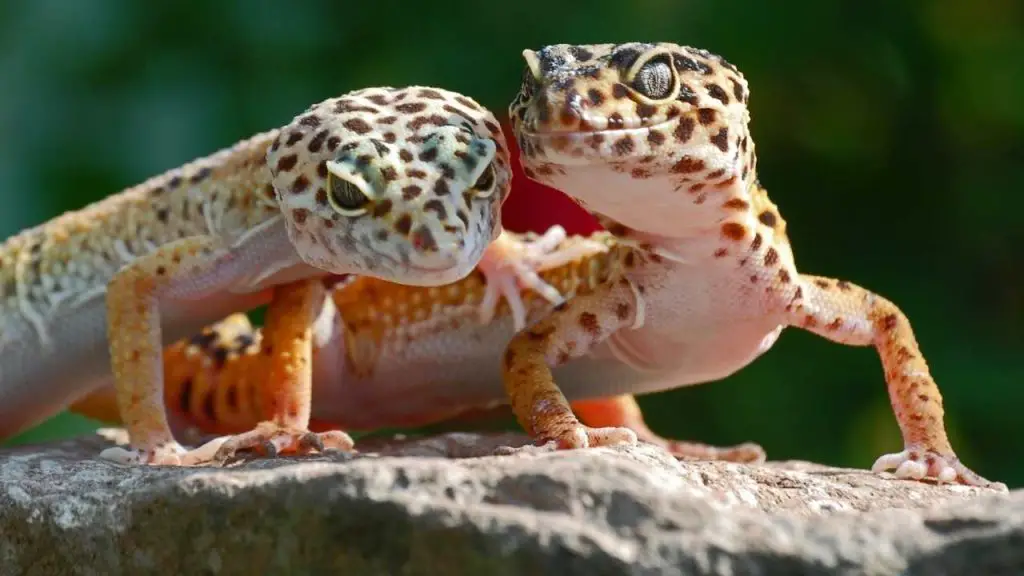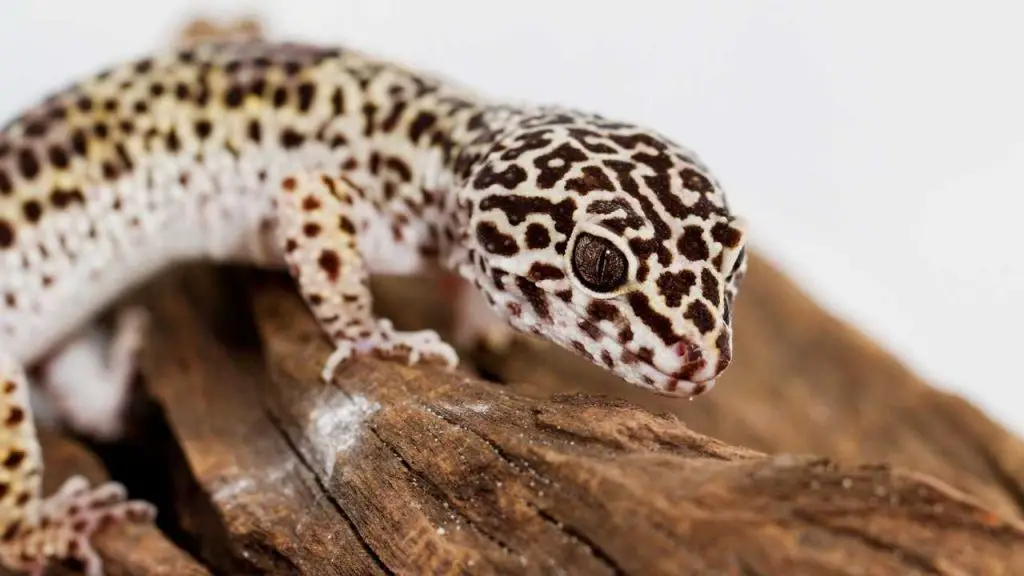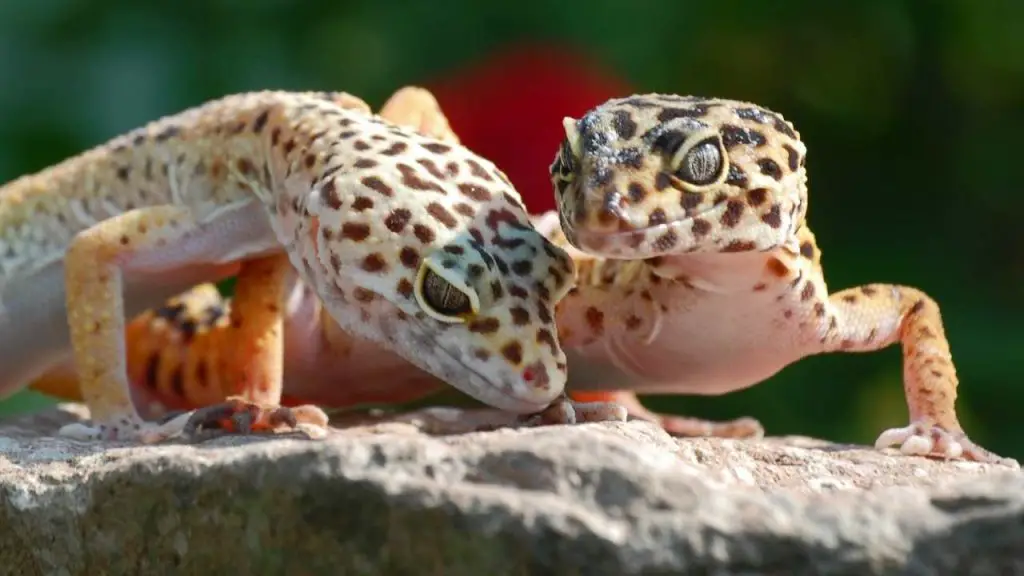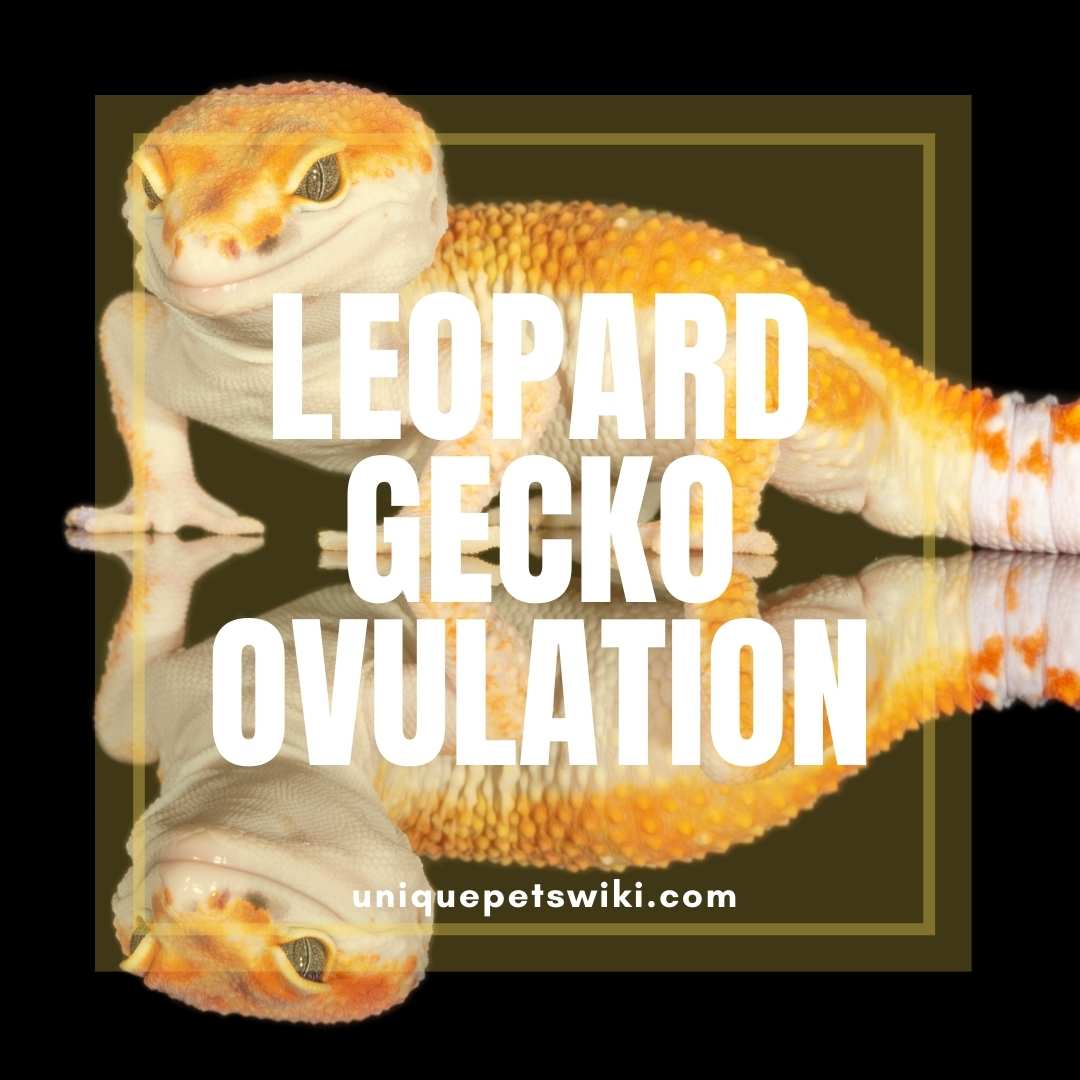We have all been in a situation where we wonder whether our pet is pregnant but not sure. Beginner hobbyists can easily get confused if their gecko is pregnant or simply gaining weight.
It is quite hard to determine if your gecko is pregnant if you do not have experience with gravid leopard geckos. Female leopard geckos will start ovulating once they have reached sexual maturity at 18-24 months old.
Furthermore, adult female leopard gecko will start ovulating from January through June or July every year. You can easily notice this once your adult gecko behavior and feeding changes.
In this article, you will learn whether leopard gecko ovulates, what it means when your leopard gecko ovulates, signs of ovulation in leopard gecko, and so on.
This article has been reviewed by Dr. Gospel. Read more about our knowledge control process here.
Contents
Does A Leopard Gecko Ovulate? Understand Leopard Gecko Ovulation

Yes, adult female leopard geckos start ovulating around January through June/July. Furthermore, you will notice some behavior and feeding changes once your female gecko starts ovulating.
However, leopard geckos that are not matured are on a different cycle. Female geckos usually start to ovulate once they are about 8-12 months old. The male Leo becomes sexually mature once they are about six months old.
Throughout the breeding season, both male and female leopard geckos may eat sparingly. You should not be alarmed because some geckos can fast throughout the breeding season.
What does it mean when your leopard geckos ovulate?
Once your leopard geckos start to ovulate, it means it is ready for breeding. Female leopard geckos can even start to produce eggs during this period.
Signs of Ovulation In Leopard Geckos

In this section, you will learn about the major signs to determine if your leopard gecko is ovulating. However, you cannot use a sign to determine if your leopard gecko is pregnant, and it is best to look for two or more signs to be sure.
Swollen Abdomen
Leopard geckos don’t usually gain weight during the ovulation period. Although leopard geckos’ abdomen can get swollen during this period, it is not connected with increased physical weight.
The swollen abdomen in Leo during ovulation is completely symmetrical because they lay clutches in groups of two.
Swelling can make it hard to determine if your gecko is with eggs or just gaining weight. You can gently press your gecko’s stomach to feel the eggs. The eggs will feel like a firm lump or muscular wall under their bellies.
Note: you need to be extremely gentle when pressing their stomach, or you may injure the eggs or your gecko.
Lack Of Appetite
Your leopard gecko may start eating little or cease eating soon after the early days of pregnancy. This happens because the space in their stomachs and digestive system has limited space as the eggs grow.
However, you can feed your gecko as usual, but you should not be surprised if your gecko refuses to eat as much as recommended. During pregnancy, you can also notice the thinning of the tail and back, which is caused by a lack of appetite.
Leopard gecko end weight after laying eggs is usually lesser than her starting weight before getting pregnant. Your gecko will start eating well and gain their weight back quickly after laying an egg.
Slow Movements
Similar to many pregnant animals and reptiles, leopard geckos will move less during pregnancy. This happens because of the combination of pregnancy factors like eating less and the effect of growing eggs in her body.
Your gecko will spend most of her time in the hide box, and whenever she comes out, it will be slow and for a short time.
Visible Eggs (Uncommon)
The body parts of leopard geckos start to thin out during pregnancy, and you may start to see the eggs underneath their underbellies. This is a surer sign that you can see but can be quite alarming for many first-timers.
This is because it looks like the eggs are going to burst out of your gecko’s stomach. However, visible eggs are not a common occurrence, but it is not unusual as well.
Stressed Behaviors/Cranky Attitude
It is common for animals to change their behavior when pregnant, and you can also see this with leopard geckos.
Leopard gecko fearful behaviors are usually amplified during the pregnancy period. This is because they are on the alert to protect their potential offspring.
This means your gecko is likely to run away, nip at you, drop their tails, and chirp angrily once they are pregnant.
Taking Care of Leopard Geckos During Ovulation
Here are some of the things you can do to make your gecko stay happy, healthy, and have a good, viable pregnancy once you have confirmed your Leo is pregnant.
- Remove the tank from the area with loud sounds.
- Place a nesting box in the tank.
- Continue feeding your gecko but ensure the vitamin supplements are present.
- Reduce handling your gecko as much as possible.
- Isolate your gecko away from any other pets during pregnancy
- Be extra calm and slow when interacting with your female gecko.
Taking Care of Leopard Geckos After Mating

Here are some tips for taking care of your gecko after mating.
Taking Care of Leopard Geckos While Pregnant.
After mating, remove the female gecko from the cage back to her own cage. This is because leopard geckos will not hold onto sperm until the conditions are ripe. After mating, add an egg box to your female’s tank to give her a spot to lay.
You will then fill the egg box with peat moss or vermiculite. You can cover the top but provide an entry and exit space for your gecko.
It is also important that you feed your breeding leopard geckos with crickets at least every other day or place a dish of mealworms in their enclosures all the time. You should also ensure gut load the feeder insects 24-48 hours before feeding them to your leos.
Instead of dusting feeder insects, you can place a jar filled with supplements in the corner of their cage, and your gecko can decide when and how much to consume. Also, ensure fresh water is always available for your gecko.
Preparing For Leopard Geckos Eggs Laying
Leopard gecko has a short gestation period and lays her first clutch between 15-22 days after mating. Each clutch comprises 1-2 eggs. Egg-laying continues every 15-22 days until your gecko lays 4-5 clutches. This shows that your Leo will lay about 8-10+ eggs per mating.
After you have placed an egg box in your geckos’ tank, you need to ensure you have set up your incubator correctly before your Leo lays eggs at the end of the 15 days.
You can use peat moss or vermiculite for your incubator as well, and you need to ensure there are stable temperatures and humidity for a good hatching chance.
When you are preparing the bedding medium, mix with water to keep moist because the eggs need humidity for successful hatching.
Note: although high humidity is better for the eggs, you will also need to be wary of mold.
Equipment and Supplies Needed For Breeding
It is best to get all the materials that your Leo needs before you begin the breeding process. Some of the equipment and supplies that you need are stated below.
- Nesting or egg-laying box, and moist sphagnum moss or eco-earth-type substrate for the main terrarium
- You need to have a sufficient food supply. This is because your breeding pair requires additional food during egg-laying and mating processes. Furthermore, hatchling and juvenile leopard geckos eat more frequently than adults.
- Additional calcium supplementation.
- Material and equipment needed for egg incubation such as plastic boxes, incubators, vermiculite, or commercial incubation medium.
- Boxes, space, shelters, paper towels, water trays, and food for housing the hatchlings
Wrapping Up
Adult female leopard geckos start ovulating around January through June or July every year. Once your Leo starts ovulating, it means that it is ready for breeding. Your female Leo can start to produce eggs during this period.
